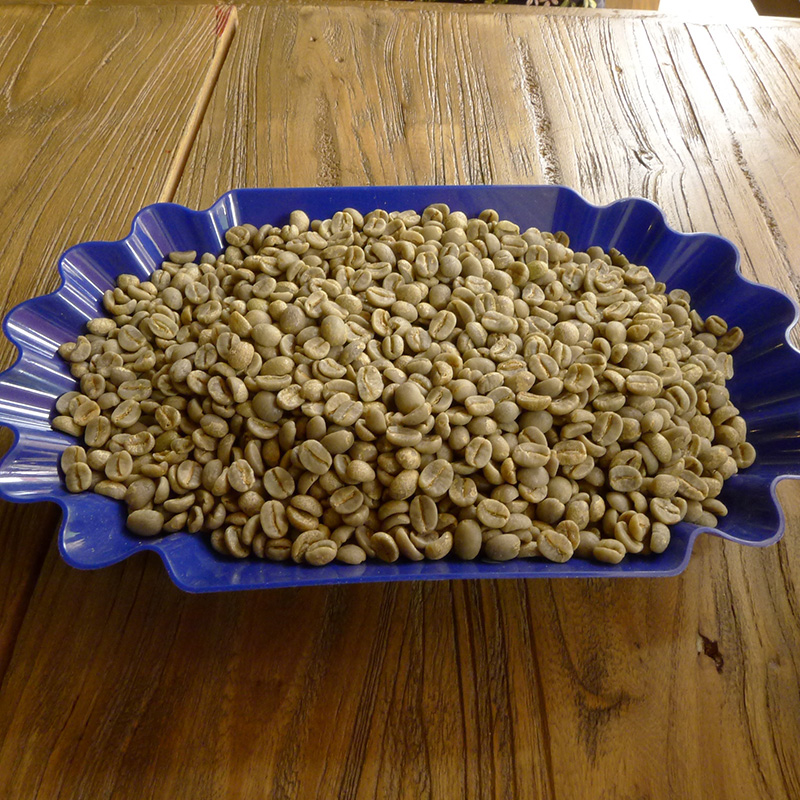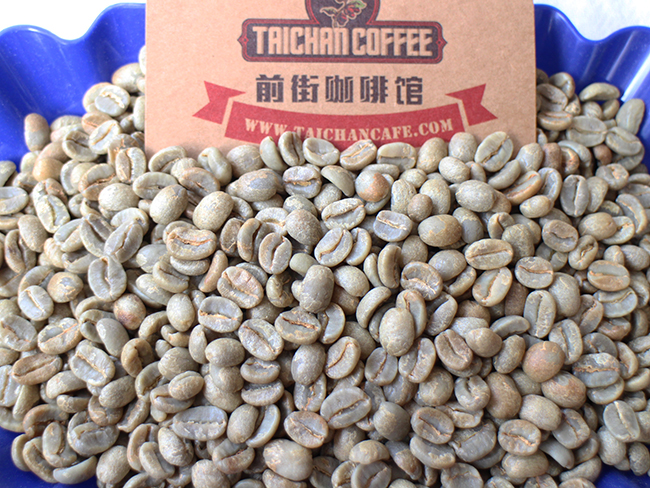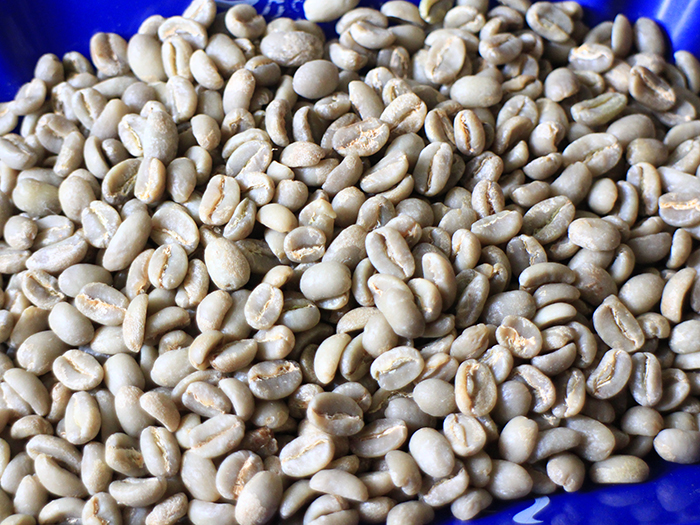How to choose coffee beans? Choosing the right coffee beans? Costa Rica Tara Beads
What kind of raw beans are high-quality raw beans? First look at the surface of beans, fresh and high-quality raw beans, the surface is shiny, in addition, the processing of good raw beans, uniform color, the surface of uneven color can not be called good beans, must choose uniform color. Secondly, the particle size is the same, which is also evidence of good quality management. Make sure that the particle size is the same when you buy it. Even and neat coffee raw beans can achieve a consistent baking effect; otherwise, some are too deep and bitter, and some are too shallow and sour, which will affect the overall taste of roasted coffee beans. Raw beans are divided into several grades according to quality standards, which vary from place to place, basically according to size and shape. The higher the grade, the better the quality. At present, as the domestic coffee raw bean market has just started, the coffee raw beans sold are mainly low-grade futures beans. People usually have a lot of defects in the raw beans they get. Defective coffee beans are quite harmful, including that the mutated beans are neither flat nor garden beans. Due to abnormal development, the raw beans are broken in the center when they are shelled. This kind of bean is prone to uneven baking. Fermented beans / black beans are fermented internally in the process of processing or washing. It has the smell of fermented acid. Unripe beans / white dead beans are harvested when the coffee fruit is not fully ripe. This kind of bean is ivory after baking and tastes green and astringent. The process of processing and transportation of mildew beans is affected by damp, rain and mold. As long as one bean is moldy, it will soon spread to others, so be careful. Worm-eaten beans are eaten by a pest called coffee bark beetle, and there are insect eyes on the beans, which make coffee smell.
Costa Rican Saint Roman processing Plant Royal Coffee
CostaRicaSanRamonRoyalCoffee
Country: Costa Rica
Grade: SHB
Altitude: 1700m
Producing area: Tarazhu producing area
Baking degree: medium depth baking
Treatment method: washing treatment
Variety: Kaddura, Kaduai
Processing plant: St. Roman processing plant
Flavor: berries, caramel, cream, subtle spices
The best coffee in Costa Rica seems to come from small processing plants, spread across several major coffee producing areas, including Tarazu and the western valley. This so-called coffee revolution originated 15 years ago and has greatly changed the way bean baking experts and importers think about Costa Rican coffee. Take the processing plant as the center, collect coffee beans from the surrounding small farms for processing, most of these farms are made up of small communities or families, growing coffee on their own small farms or land, and all the coffee is treated and dried by a small processing plant. The quality and flavor of Royal Coffee are very unique, which is largely due to the cooperation between coffee producers and us. St. Roman treatment plant, the use of water washing treatment, with a strong flavor. Coffee cherries are well-known for their rich and solid taste. Coffee cherries are hand-selected, overripe or immature cherries are removed by coffee farmers, and then production is processed. 3discaagaarde peeling machine is used to remove the skin and pulp, and then the machine is divided into three grades according to the density of coffee beans. Grade 1 and 2 raw beans are fermented separately, while grade 3 is low-quality raw beans. The raw beans were fermented in a cool place for about 24 to 36 hours. After fermentation, the raw beans were washed and graded again according to the density on the cleaning channel, and then the raw beans were randomly soaked in clear water overnight. After the processed coffee has been roasted, the bitter sweet chocolate flavor is as thick and sweet as cream sugar, with low-key wine acidity and aroma, and the fruit sweetness of chocolate beans is forgettable.
Costa Rican coffee cultivation was introduced by Cuba in 1779 and exported for the first time in 1820. There are about 32000 coffee farmers, with an average planting area of less than one hectare (10000 hectares) per farmer. Costa Rica has a population of 41 billion (2006), with a coffee planting area of 82500 hectares and an annual production of 1.7 million bags (60kgs per bag). The annual domestic consumption is 380000 bags, with an average annual national consumption of 5.5kgs, which is higher than that of Japan (consumption 4kgs). At present, Taiwanese are only slightly higher than 1kg.

Important Notice :
前街咖啡 FrontStreet Coffee has moved to new addredd:
FrontStreet Coffee Address: 315,Donghua East Road,GuangZhou
Tel:020 38364473
- Prev

How to choose coffee and raw beans by hand? Choose the right raw coffee beans? Nicaraguan Jim Molina Manor
What kind of raw beans are high-quality raw beans? First look at the surface of beans, fresh and high-quality raw beans, the surface is shiny, in addition, the processing of good raw beans, uniform color, the surface of uneven color can not be called good beans, must choose uniform color. Secondly, the particle size is the same, which is also evidence of good quality management. Make sure that the particle size is the same when you buy it.
- Next

How to choose coffee beans? Choosing the right coffee beans? El Salvador Estate Pacamara Raw Beans
What kind of raw beans are high-quality raw beans? First look at the surface of the beans, fresh high-quality raw beans, shiny surface, in addition, processed good raw beans, uniform color, uneven color surface can not be called good beans, must choose uniform color when purchasing. Secondly, the particle size is consistent, which is also evidence of good quality management. When purchasing, confirm whether the particle size is consistent
Related
- Detailed explanation of Jadeite planting Land in Panamanian Jadeite Manor introduction to the grading system of Jadeite competitive bidding, Red bid, Green bid and Rose Summer
- Story of Coffee planting in Brenka region of Costa Rica Stonehenge Manor anaerobic heavy honey treatment of flavor mouth
- What's on the barrel of Blue Mountain Coffee beans?
- Can American coffee also pull flowers? How to use hot American style to pull out a good-looking pattern?
- Can you make a cold extract with coffee beans? What is the right proportion for cold-extracted coffee formula?
- Indonesian PWN Gold Mandrine Coffee Origin Features Flavor How to Chong? Mandolin coffee is American.
- A brief introduction to the flavor characteristics of Brazilian yellow bourbon coffee beans
- What is the effect of different water quality on the flavor of cold-extracted coffee? What kind of water is best for brewing coffee?
- Why do you think of Rose Summer whenever you mention Panamanian coffee?
- Introduction to the characteristics of authentic blue mountain coffee bean producing areas? What is the CIB Coffee Authority in Jamaica?

